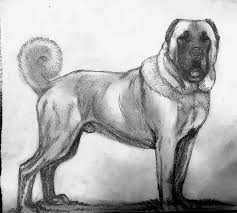Drawing:skfktqthywc= Dogs have long been celebrated as man’s best friend, making them a popular subject for artists across the globe. drawing:skfktqthywc= dog can be a rewarding experience, capturing their unique personalities and expressions. From their playful nature to their loyal companionship, dogs provide endless inspiration for artists of all levels. Moreover, learning to draw dogs helps improve observational skills and enhances the ability to capture emotions through art. According to art historian Sarah Thompson, “The dog’s expressive face and dynamic body language make them ideal subjects for artists seeking to convey movement and emotion in their work.”
Drawing:skfktqthywc= dog allows artists to experiment with different styles, from realistic to cartoonish, providing a platform to showcase creativity and individuality. For beginners, starting with simple sketches can help build confidence before progressing to more detailed illustrations. Artists can explore various poses and expressions, from a dog’s joyful wagging tail to its attentive gaze. This practice not only develops artistic skills but also deepens the understanding of canine anatomy and behavior, enriching the artist’s ability to portray these beloved animals authentically.
Essential Tools and Materials
To begin your journey into drawing:skfktqthywc= dog, it’s important to have the right tools and materials. Pencils are fundamental, offering varying levels of hardness for sketching and detailing. Graphite pencils (HB to 6B) are ideal for creating depth and shading, while colored pencils add vibrancy to your artwork. Erasers are equally essential, allowing for corrections and enhancements in your drawings. A kneaded eraser is particularly useful for lightening areas and creating highlights without smudging the paper.
Quality paper can greatly impact your drawing’s final appearance. Smooth paper is excellent for detailed work, while textured paper adds character to sketches. Consider using sketch pads or drawing blocks specifically designed for artists. Additionally, digital tools like graphic tablets and drawing software (such as Adobe Photoshop or Procreate) offer flexibility and precision, allowing artists to experiment with layers and effects. This blend of traditional and digital tools provides a comprehensive foundation for anyone eager to excel in drawing:skfktqthywc= dog.
Step-by-Step Guide to drawing:skfktqthywc= dog
Drawing:skfktqthywc= dog When beginning your dog drawing, it’s crucial to simplify the form into basic shapes. This technique helps in establishing proportions and positioning before diving into intricate details. Start with circles and ovals to outline the head, body, and joints. For instance, use a circle for the head and an oval for the body to create a guideline for the dog’s frame. This method makes it easier to adjust and perfect the drawing without committing to complex lines.
Drawing:skfktqthywc= dog As you sketch, focus on the alignment and spacing of these shapes. This step is vital for capturing the natural flow and posture of a dog. Using simple geometric shapes ensures your drawing maintains balance and proportion, forming a strong foundation for the detailed work to come. Over time, you’ll develop an eye for recognizing these basic forms in more complex poses and positions, which is essential for realistic drawings.
Drawing:skfktqthywc= dog Once the basic shapes are in place, the next step is to refine these outlines into the dog’s form. Begin by connecting the shapes smoothly to outline the dog’s body, legs, and tail. Use light, confident strokes to shape the body, emphasizing natural curves and angles that depict the dog’s anatomy accurately. Pay attention to the transition areas, such as where the head meets the neck and where the legs connect to the body, as these are key to a realistic portrayal.
Drawing:skfktqthywc= dog Enhancing the outline involves adding features such as the dog’s ears, eyes, and muzzle. These elements bring personality and character to your drawing. Consider the breed characteristics and adjust the outline accordingly—for example, the droopy ears of a Basset Hound or the erect ears of a German Shepherd. This phase transforms your initial sketch into a recognizable canine form, setting the stage for adding finer details.
Advanced Techniques in drawing:skfktqthywc= dog
Capturing Dog Expressions
A dog’s face is incredibly expressive and can convey a wide range of emotions. Capturing these expressions is key to bringing your drawing to life. Focus on the eyes and mouth, as they are the primary features that express emotion. Observe real dogs or use reference photos to study how subtle changes in the eyes and mouth can indicate different feelings, such as happiness, curiosity, or alertness. Artists often say, “The eyes are the windows to the soul,” and this is especially true when drawing animals.
Drawing:skfktqthywc= dog Incorporating expressions involves paying close attention to the positioning and shape of the eyes, eyebrows, and mouth. For instance, raised eyebrows and an open mouth can suggest excitement, while a closed mouth and relaxed eyes might indicate calmness. Experiment with these elements to add depth and personality to your drawings, making them more relatable and engaging to viewers.
Drawing Different Breeds
Drawing:skfktqthywc= dog Each dog breed has distinct features that make them unique, and capturing these traits is essential for an accurate representation. Understanding the anatomical differences between breeds will enhance your drawing skills. For example, a Labrador Retriever has a broad head and muscular build, while a Greyhound is slender and elongated. Studying these variations allows you to adapt your drawing style to fit each breed’s characteristics.
When drawing specific breeds, focus on their signature features, such as the curly fur of a Poodle or the wrinkled face of a Bulldog. This attention to detail not only improves the realism of your art but also challenges you to explore new techniques. As you become familiar with various breeds, you’ll gain confidence in your ability to portray any dog with accuracy and flair.
Enhancing Your Drawings with Color and Shading
Basics of Shading
Shading is a powerful technique that adds depth and dimension to your drawings, transforming a flat sketch into a three-dimensional image. Begin by identifying the light source in your composition and shading accordingly. Use a range of pencil grades to create varying shades of light and shadow, from light gray to deep black. This contrast highlights the dog’s features, making them stand out.
Effective shading involves understanding how light interacts with the dog’s form. Areas facing the light will be lighter, while those in shadow will be darker. Apply shading with a gentle hand to build layers gradually, creating a realistic texture that mimics the natural look of fur. This method not only enhances the drawing’s realism but also emphasizes the dog’s shape and musculature.
Using Colors Effectively
Color adds vibrancy and life to your drawing:skfktqthywc= dog, allowing you to portray the unique coat patterns and tones of different breeds. Choose a color palette that complements the dog’s natural colors, whether using colored pencils, markers, or digital tools. Layer colors carefully to achieve a realistic effect, starting with a base color and gradually adding highlights and shadows.
When applying color, consider the texture of the dog’s fur. Use soft strokes for smooth coats and more dynamic strokes for curly or wiry fur. Blending colors smoothly is crucial for a natural appearance, so take your time to mix shades seamlessly. Experiment with different techniques to capture the essence of the breed you’re drawing, making your artwork both accurate and visually striking.
drawing:skfktqthywc= dog in Various Poses
Understanding Movement and Dynamics
Drawing:skfktqthywc= dog in various poses adds interest and action to your artwork, showcasing the animal’s agility and character. Understanding how a dog’s body moves is essential for capturing dynamic poses like running, jumping, or playing. Study canine anatomy and watch videos to observe how muscles contract and expand during movement. This knowledge will help you portray motion convincingly.
Begin with simple poses and gradually tackle more complex actions as your skills improve. Focus on the positioning of the limbs and body balance to maintain realism. Practicing with action shots not only enhances your technical abilities but also inspires creativity, encouraging you to experiment with new ideas and perspectives in your drawings.
Common Poses and Postures
Familiarize yourself with common dog poses, such as sitting, standing, and lying down. Each posture has unique challenges, requiring careful attention to proportions and weight distribution. When drawing a sitting dog, emphasize the bend in the hind legs and the position of the tail. For a standing pose, focus on the alignment of the front and back legs to ensure stability.
To accurately capture these poses, use reference images or observe real dogs. Pay attention to the subtle nuances of each posture, such as the curve of the back or the angle of the head. By mastering these common poses, you’ll develop a strong foundation for depicting more complex and dynamic movements in your drawing:skfktqthywc= dog.
drawing:skfktqthywc= dog Final Touches and Presentation
Adding Backgrounds and Context
Integrating backgrounds into your drawings provides context and enhances the overall composition. Start with simple settings that complement the dog without overshadowing it, such as a park or a cozy living room. As you gain confidence, experiment with more complex scenes that incorporate multiple elements, like other animals or people.
When adding backgrounds, consider the story you want to tell with your artwork. A dog playing in a field might convey joy and freedom, while a dog resting by a fireplace might evoke warmth and comfort. Use color and shading to create depth, ensuring the background supports the main subject without detracting from it.
Preserving and Sharing Your Art
Properly preserving your drawings ensures they remain vibrant and intact over time. For traditional artworks, use acid-free sleeves and store them in a cool, dry place to prevent damage. For digital art, back up files regularly and use high-quality printing materials for physical copies.
Sharing your art with others can be incredibly rewarding. Join online art communities to connect with fellow artists and receive constructive feedback. Platforms like Instagram and Pinterest are excellent for showcasing your work and building an audience. Consider creating a portfolio to document your progress and achievements, especially if you plan to pursue art professionally.
drawing:skfktqthywc= dog Tips and Tricks for Improvement
Overcoming Common Mistakes
Even experienced artists make mistakes, but learning to identify and correct them is crucial for growth. Common issues in drawing:skfktqthywc= dog include incorrect proportions, awkward poses, and inconsistent shading. Use reference photos to check your work against real-life examples, ensuring accuracy and realism.
Another frequent mistake is overworking a drawing, which can lead to a loss of freshness and spontaneity. To avoid this, know when to step back and evaluate your progress. Taking breaks allows you to return with a fresh perspective and make necessary adjustments.
Continuous Learning and Inspiration
Art is a lifelong journey of learning and discovery. Dedicate time to practice regularly, honing your skills and exploring new techniques. Seek inspiration from various sources, such as books, tutorials, and other artists’ work. Attend workshops and art classes to gain insights and feedback from professionals.
Drawing:skfktqthywc= dog Engage with art communities online and offline, sharing your experiences and learning from others. Collaboration and exchange of ideas can spark creativity and lead to new artistic breakthroughs. Remember, the key to improvement is persistence, so embrace the process and enjoy the journey.
Read More: wallpaper:y0nv0sjhznu= naruto







